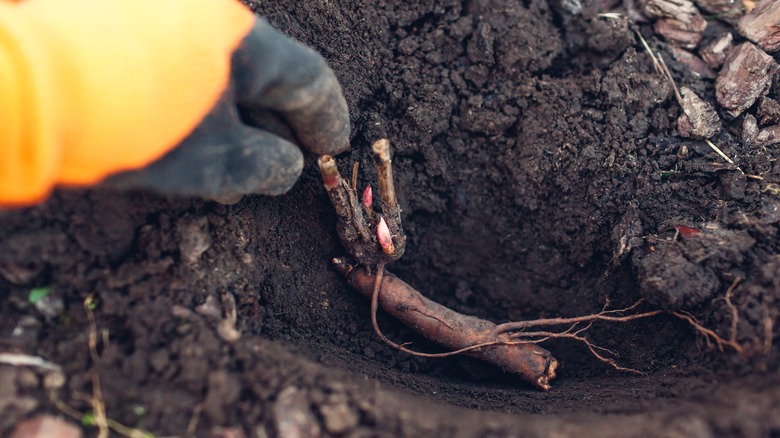Peonies are not only beautiful, but they have an exceptionally long lifespan. In fact, they are considered plants that can be passed down through generations. While the parent plant can live up to around 50 years, propagating these beautiful flowers can ensure they live on indefinitely. With such a long life expectancy, you will not need to replace peonies unless environmental or other problems kill the plant. If all goes well, you can plant these heavily perfumed blooming wonders just once and enjoy their return every year.
Since peonies are perennials, they can take a while to mature and produce blooms. As the saying goes, “The first year they sleep, the second year they creep, and the third year they leap.” When shopping for peonies, you will find most are sold as bare root tubers, similar to irises. These tubers should have at least three buds, each of which will grow into a stem. As the plant gets established, it will grow fuller, and you should start seeing flowers in the third year. You can cut this time down by planting divisions of established plants or purchasing mature plants, which are considerably more expensive.
Growing peonies

Any time you grow a bare-root perennial, the first thing you need is patience. As we mentioned, it will take a few years to get flowers, so give careful consideration to your location. Peonies, especially young plants, do not transplant well. Select a location in full sun with good drainage. In these conditions, you will get the most blooms without worrying about root rot. If you are planting more than one peony, make sure you have room to plant them about 3 feet apart. This will ensure they have plenty of room for air circulation between plants when they are mature.
The best time to plant peonies is in the fall, at least a month before the ground freezes. For each bare root, dig a hole about 2 feet wide and deep. Mix your soil with about ⅓ compost to help fertilize the plant as it grows. Backfill the hole so you can place the tuber about 2 inches below the surface. You may ask, “Why are we digging such a large hole for something that is planted so shallowly?” By removing the soil, amending it, and adding placing it back in the hole, you have freshly aerated, fertile soil. This environment makes it easier for roots and stems to emerge without fighting against compacted dirt to grow. Bury the tuber and tamp down the soil gently to make it even with the rest of the ground, then water thoroughly.
Maintaining healthy peony plants
One of the wonderful things about growing peonies is that they require very little maintenance. Once you get them started, they are generally happy to be left alone. As you wait for your plants to emerge in the spring, you might want to mark the planting location with something — you certainly do not want to accidentally walk or mow over them as they break through the ground! After the stems have fully grown for the season, buds will start to form. At this time, you will want to keep a close eye on your plants. The blooms of peonies are heavy, and wind or rain can easily knock them over, breaking the stem. You can make them stay upright with special supports made specifically for this purpose. You can also lighten your plant’s load by cutting some healthy blooms to display indoors. Deadhead your plants frequently to keep them looking beautiful.
You can fertilize your peonies after they are finished blooming once every two or three years, but this is really only necessary if you have poor soil conditions. Peonies will die back to the ground every winter, so cut all the foliage to the ground in the fall. Do not remove foliage before it is mostly brown because those leaves help the roots store energy for next year’s spectacular display.
